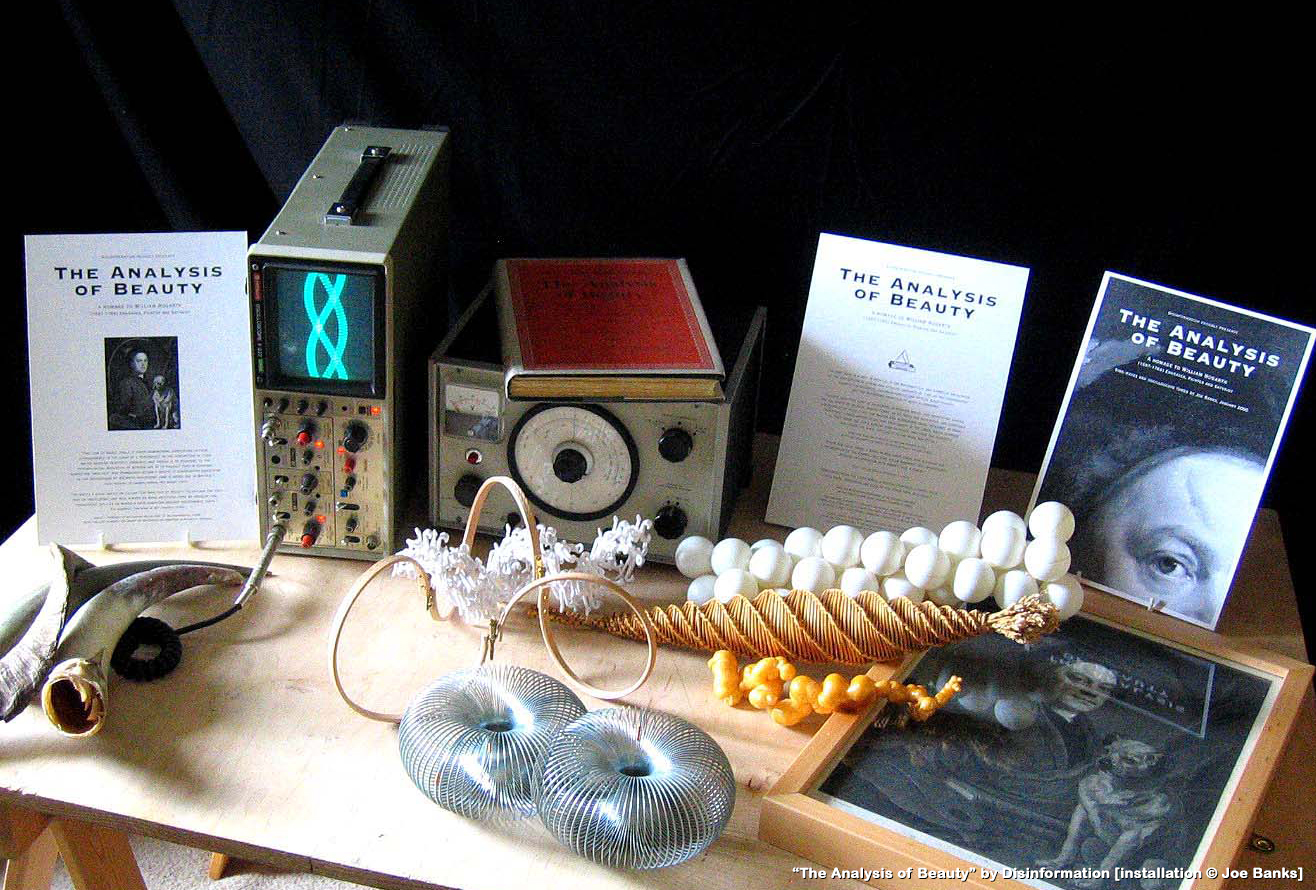Text By Joe Banks
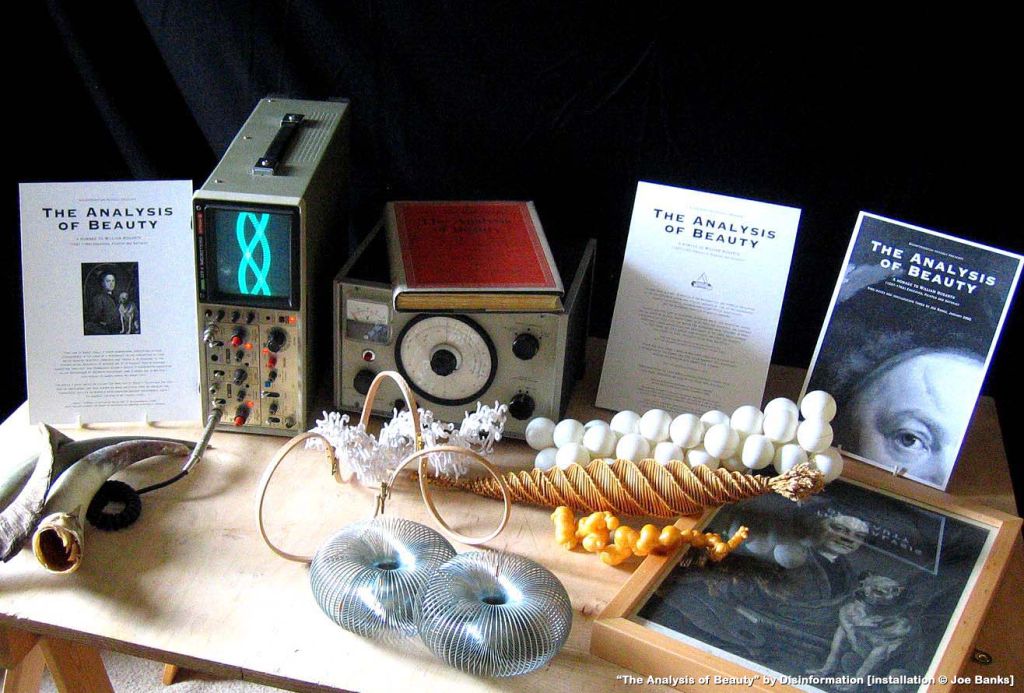
The central nervous system is nature’s Sistine Chapel, but we have to bear in mind that the world our senses present to us – this office, my lab, our awareness of time – is a ramshackle construct which our brains have devised to let us get on with the job of maintaining ourselves and reproducing our species. What we see is a highly conventionalised picture, a simple tourist guide to a very strange city. We need to dismantle this ramshackle construct in order to grasp what’s really going on. – J.G. Ballard, 1992
Writing in 1753, in his theoretical magnum-opus “The Analysis of Beauty”, the artist William Hogarth observed that “the mind itself may be so imposed upon as to make the eye see falsely as well as truly”, with the effect that, were it not for the control that the mind exercises over vision, “we should not only see things double, but upside-down, as they are painted upon the retina, and as each eye has distinct sight”. Hogarth also asserted that “experience teaches us that the eye may be subdued and forced into forming and disposing of objects even quite contrary to what it would naturally see them, by the prejudgment of the mind”, stating that “surely this extraordinary perversion of the sight would not have been suffr’d, did it not tend to great and necessary purposes, in rectifying some deficiencies which it would otherwise be subject to” (original spellings).
So, it’s been known for centuries that the light received by human eyes is projected through the pupil onto the back of each eye and that the images formed on the retina are optically upside-down; and it’s obvious from this fact alone that it is the mind which inverts the images we actually perceive, so that our visual sense can be practically useful for the safe navigation of our environment. Likewise, as Hogarth was also aware, it is sometimes easy to overlook the fact that the information provided by the eyes consists of not one but two images and that it is again our minds which fuse these images into the single perceptual construct that we perceive as being visual reality.
William Hogarth’s observations about what today we’d refer to as cognitive neuroscience, appeared in the context of the broader discourse contained in his book. The central focus of “The Analysis of Beauty” was Hogarth’s discussion of the aesthetics and symbolism of the S-shaped, (as Hogarth put it) “Serpentine” line, or “Line of Beauty” – the elegant sinusoidal form which Hogarth posited as the essence of beauty, which is the same line that modern physics and mathematics refer to as the sine-wave. Under the aegis of the electronic music and art project Disinformation, I exhibit an art installation called “The Analysis of Beauty”, which uses musical signals from laboratory sine-wave generators, which are then made visible as Serpentine Lines on the screen of a laboratory oscilloscope. The pattern on the oscilloscope screen strongly resembles DNA, and this exhibit was described as “visually sophisticated” and “distinctive and intelligent” by Art Monthly and as “particularly sensuous” by The Wire magazine.
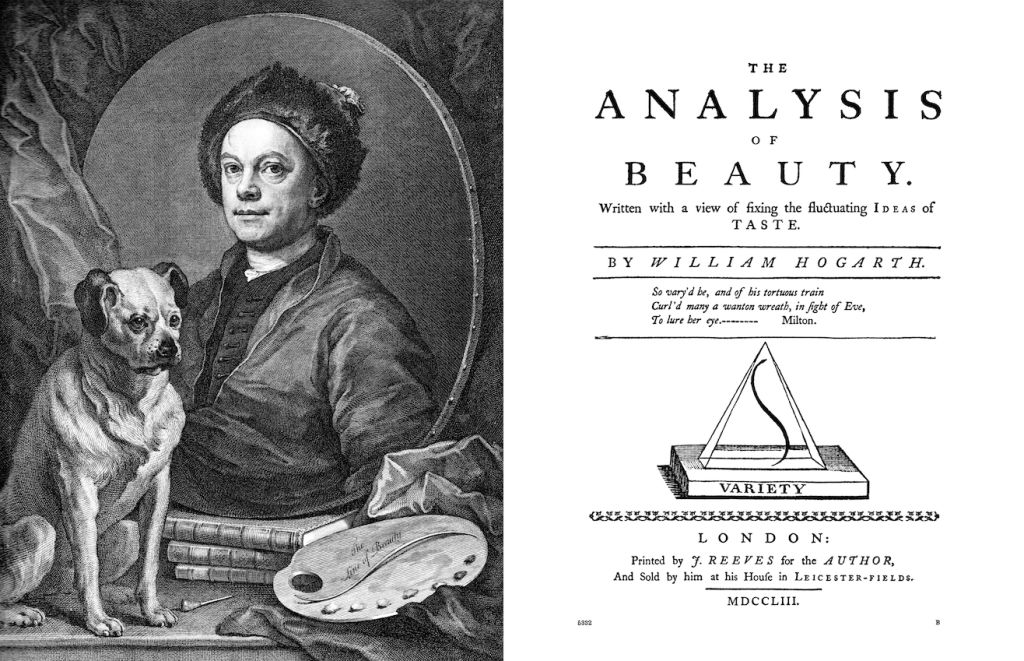
Visual aesthetics aside, however, this installation has another trick up its’ sleeve. After watching these lines move for a little while, it’s quite easy to persuade the lines to fuse into what appears to be a solid object. Sometimes the form appears to be flat, sometimes three-dimensional. Sometimes the object seems to rotate to the left, sometimes to the right. Sometimes the direction changes spontaneously and sometimes blinking, tilting your head, and even thinking about the object in a different way can induce this form to rotate in the opposite direction. The point to be aware of here is that none of the changes you see take place on-screen. All of these changes take place inside your own mind…
In fact, sometimes vivid illusions of three-dimensional form emerge, despite the absence of all the object-precedence, geometric and aerial perspective, motion parallax, texture gradient, stereoscopic and binocular visual cues conventionally thought to enable perception of visual depth and space.
So, we perceive visual depth because close objects physically obscure more distant objects, because the build-up of atmospheric haze causes distant objects to appear faint and visually blurred, because distant objects become visually smaller and objects and lines recede towards distant vanishing points, because the brain interprets the divergent views of objects received by the left and right eyes, and because we understand how objects move relative to each other in visual space. Think, for example, of the striking illusions of depth that binocular vision produces in 3D cinema or the legendary “Father Ted” sketch – “these [cows] are small, but the ones out there are… far away”.
In the case of “The Analysis of Beauty” exhibit, however, we perceive visual depth with none of these visual cues. It is instead our knowledge which informs guesses about what shapes certain ambiguous patterns would be likely to form, then our minds actively project those guesses out onto the raw “sense data” that was received by our eyes. The paradox is that although the “perceptual hypotheses” produced by such images result in optical illusions, we experience these illusions as being visually “real”, and, from the point-of-view of cognitive neuroscience, the ramifications of that paradox are absolutely profound.
A common-sense understanding of visual perception might suggest that objects exist in plain sight, light bounces off them, enters our eyes, and we simply see those objects – almost always accurately – without much mental effort being involved. So, if, on the basis of the so-called Kinetic Depth Effects produced by watching “The Analysis of Beauty” installation, it seems counterintuitive to suggest that what we see might be partly made up of mental guesswork, in fact, this claim is surprisingly easy to prove…
Simply draw two dots, about 5mm wide and 10cm apart on a card, then move the card backwards and forwards in front of your eyes. Cover your right eye with your right hand, and, holding the card with your left hand, focus your left eye on the right dot, but remain aware of the left dot as it appears in your peripheral vision. Keeping the left eye still fixed on the right dot, move the card to and fro, adjusting the viewing distance until the left dot… disappears. Alternatively, watch the animation below – close your left eye, then focus your right eye on the smaller left-hand spot, but remain aware of the larger right-hand dot as it moves in your peripheral vision… then watch until the large dot… disappears.
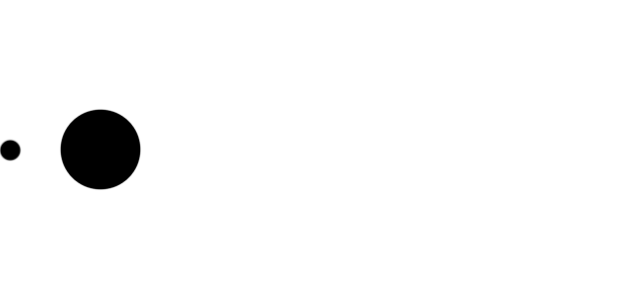
A portion of the retina folds back into the rear of the eye, to transmit information to the brain along the optic nerve, and this area is insensitive to light. The disappearances you’ve just experienced take place when the images of these dots fall onto that optic blind spot.
The fact that blind spots can be used to make images (and sometimes whole objects) disappear is intriguing and entertaining, but what’s most revealing about this phenomenon is something that’s often neglected. Because the mind’s compensatory mechanisms work so well, it’s easy to forget that blind spots are always there, all the time; and because the mind “copies and pastes” imagery from around these blind spots to prevent our vision being interrupted by visual holes, what blind-spots also show us is that the apparently seamless visual field that we experience as being visual “reality” is in some respects itself a carefully constructed optical illusion! In fact, the mind’s ability to “fill-in the blanks” isn’t limited to the blind spot, as similar mental guesswork is also used to compensate for visual gaps produced by the network of blood vessels that criss-cross the retina.
So, as observed by William Hogarth, the mind inverts upside-down images, combines stereoscopic sense-data into a single visual field, and both forms and disposes of visual objects. In fact, the mind analyses visual sense-data, detects information, assigns meanings to objects, and then classifies objects in relation to their practical importance in the day-to-day business of performing tasks like walking up and down stairs without tripping and hurting ourselves, etc.
If it still seems perhaps far-fetched to suggest that the mind can edit whole objects out of visual perception, in fact, the mind does this continually, and again this fact is easy to demonstrate. We’ve all had experiences of tearing the house apart searching for lost wallets and keys, and while these do sometimes show up down the back of the sofa, in many cases, they were on the table all the time, but, for neurological rather than optical reasons, our brains failed to see them. Likewise, rather than being obscure, the ultimate proof of this theory always was hiding in plain sight, literally in front of us all our lives – when we stroll in the park, we enjoy a smooth and apparently uninterrupted visual field, as soon as we think about our nose, however, that object, which was previously invisible, suddenly reappears.
The writer Aldous Huxley is primarily known as the author of “The Doors of Perception”; what’s less well-known is that Huxley’s partial blindness led to a fascination with ophthalmology. In his book “The Art of Seeing”, Huxley stressed how “sensing is not the same as perceiving” and how “the eyes and nervous system do the sensing, the mind does the perceiving”. Huxley described how “in adults, the… processes of sensing, selecting and perceiving are for all intents and purposes simultaneous”, with the effect that we are normally “only aware of the total process of seeing objects, and not of the subsidiary processes which culminate in seeing”.
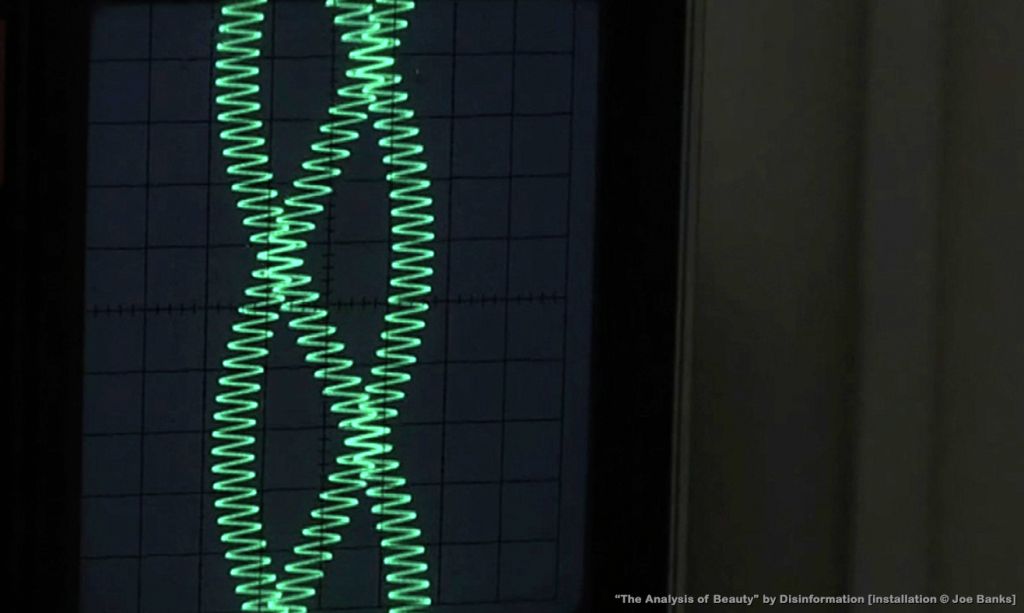
Huxley argued that “for the adult, a complete recapture of the experience of pure sensation, without perception of physical objects, is possible… only in certain abnormal conditions, when the upper levels of the mind have been put out of action by drugs or disease”, and argued that “by inhibiting the activity of the interpreting mind” it is possible to “catch a hint of the raw sensum [sense-data] as it presents itself to the eyes of the newborn child.”
Huxley recalled, from experience, how “while coming out of an anaesthetic… awareness began with pure visual sensations completely devoid of significance”. These sensations “were not objects existing ‘out there’ in the familiar, three-dimensional world” but were “just coloured patches, existing in and for themselves, unrelated… to the external world.” As the anaesthetic wore off, these patches became “associated with certain objects”, and his mind progressively identified and categorised these objects, relating them to his own memories and his re-emerging sense of self. Huxley’s descriptions strongly corroborate the ideas about perception outlined in the rest of this article.
With this in mind, it can be argued that the ultimate value of studying illusions and apparent subjectivities of vision etc., lies not in the fact that intriguing and beguiling visual tricks can be made to perform on the pages of psychology textbooks and in strange images in videos, etc. The way illusions are discussed in newspaper and magazine articles, books and online science features etc., often encourages us to think of illusions as being little more than amusing novelties or sources of occasional perceptual errors. It is, however, more fruitful to be aware of the fact that the guesses which the mind projects out into our environment are so well-informed and so sophisticated in their construction that they are usually right, and that, under normal circumstances, they usually provide accurate descriptions of our external world.
It is also helpful to understand that illusions arise as by-products of critically important perceptual faculties, faculties which serve real practical purposes and which emerged as products of evolutionary biology. With that in mind, it follows that “the great and necessary purpose” that William Hogarth alluded to 260 years ago is, of course, human survival; and the fact that many (even non-mammalian) species compensate for visual blind spots suggests that these kinds of mental faculties precede humans, far back in the historic evolutionary time-scale.

